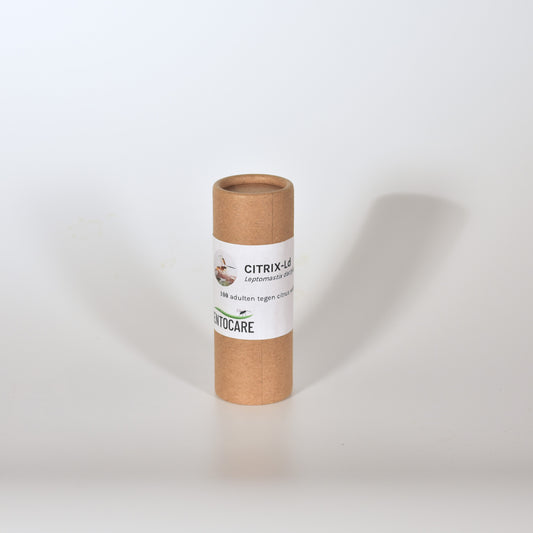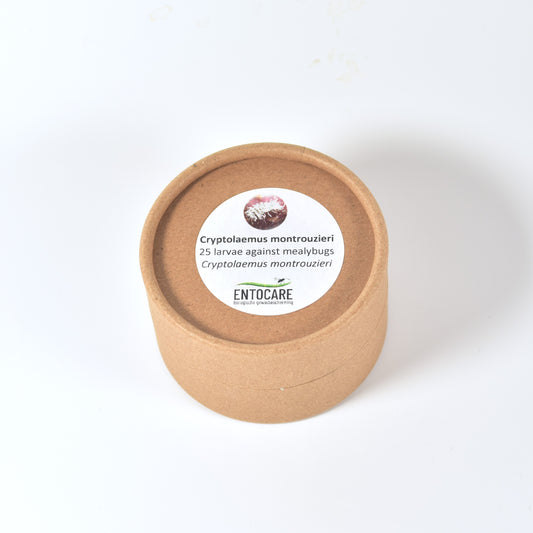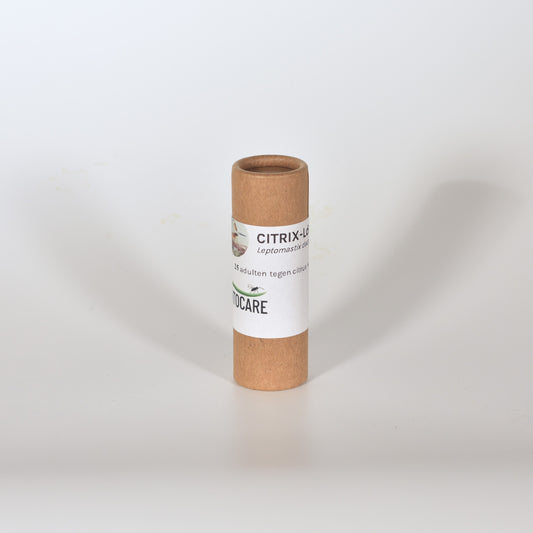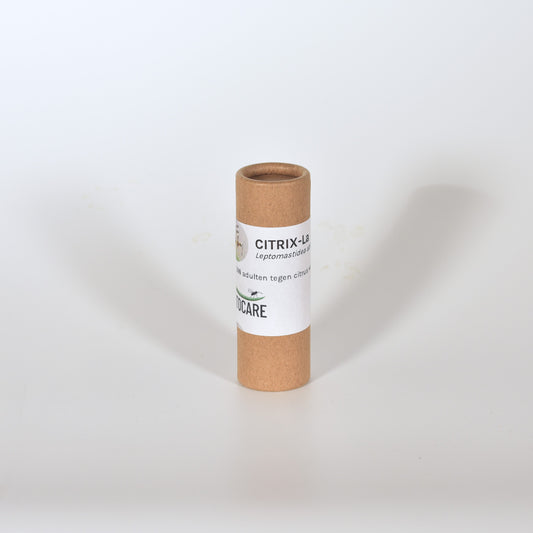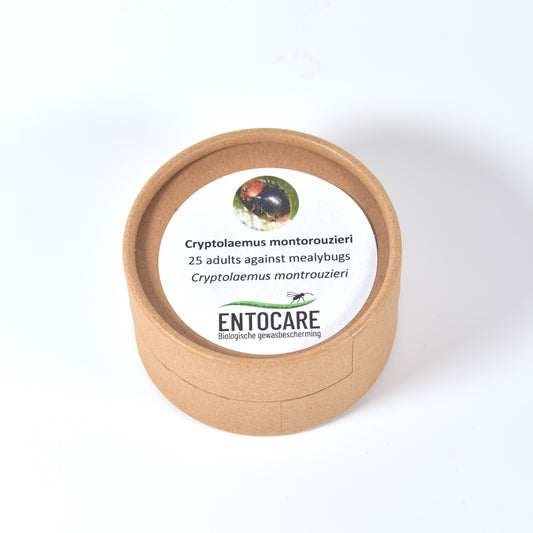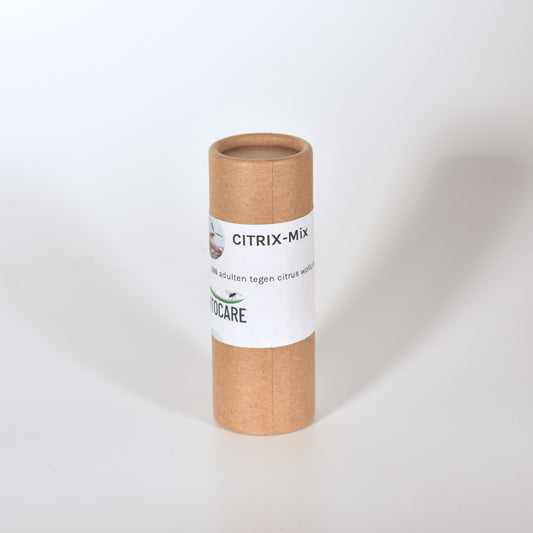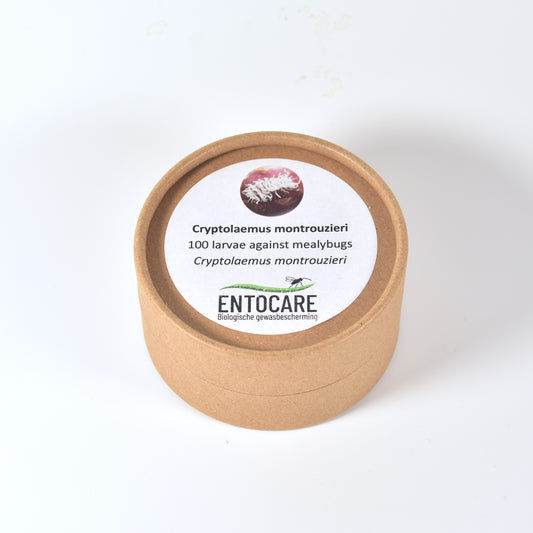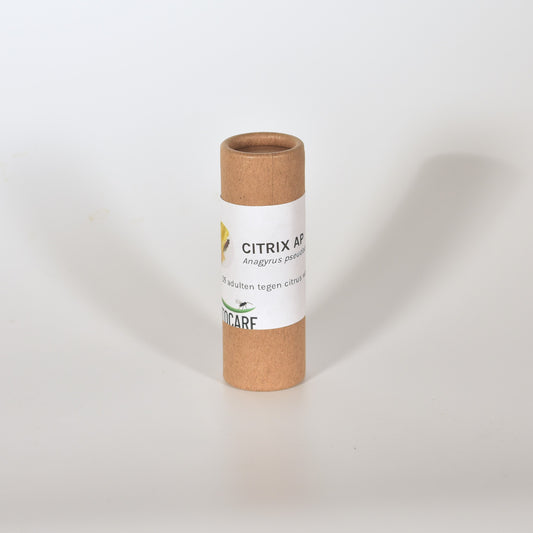
How do you recognize citrus mealybug?
Citrus mealybug is white. The white color comes mainly from the with wax threads that cover the body. The actual body color is yellow-orange. This is better visible in younger stages that don’t have many wax threads covering their body. Citrus mealybug can be distinguished from other mealybugs by their short tail hairs, the length stripe across the back and short wax threads around the body. Citrus mealybugs produce white fluffy masses of wax threads for oviposition. The eggs are light yellow, shiny and oval shaped. Male citrus mealybugs greatly differ from their female counterparts in the adult stage. Males elongate and make a cocoon of white waxy material in which they develop into gray, winged individuals. After metamorphosis they are barely recognizable as mealybugs.
Citrus mealybug damage and distribution
Citrus mealybug canbe foundin all parts of the plant. Virtually all stages produce honeydew. Young mealybugs often move towards the growing tips and older stagesremain lower in the crop in leaf axils or on the underside of the leaves. Mealy bugs feed by sap sucking on plant tissues, causing deformations, reduced growth, leaf discolorationand early leaf shedding. Distribution of mealybugs happens mainly in the youngest stage when the so-called crawlersactivelydisperse throughout the plant. The crawlers can also be easily spread manually or by wind.
Products against citrus mealybug
-
LEPTOMASTIX DACTYLOPII - 100
-
CRYPTOLAEMUS MONTROUZIERI larvae - 25
Vendor:Entocare eigen kweekRegular price €13,00 EURRegular priceUnit price / per -
LEPTOMASTIX DACTYLOPII - 25
-
LEPTOMASTIDEA ABNORMIS - 100
-
CRYPTOLAEMUS MONTROUZIERI adults - 25
Vendor:Entocare eigen kweekRegular price €14,00 EURRegular priceUnit price / per -
L. dactylopii / L. abnormis mix - 100
-
CRYPTOLAEMUS MONTROUZIERI larvae - 100
-
ANAGYRUS PSEUDOCOCCI - 25
-
Life cycle citrus mealybug
300 eggs per female
eggs hatch after six to eight days
egg to adult in 25-40 days
3 to 4 development stages
active during spring and summer -
Host plants citrus mealybug
common in greenhouses
in floriculture and horticulture
pot plants, roses, palms
tomato, eggplant
-
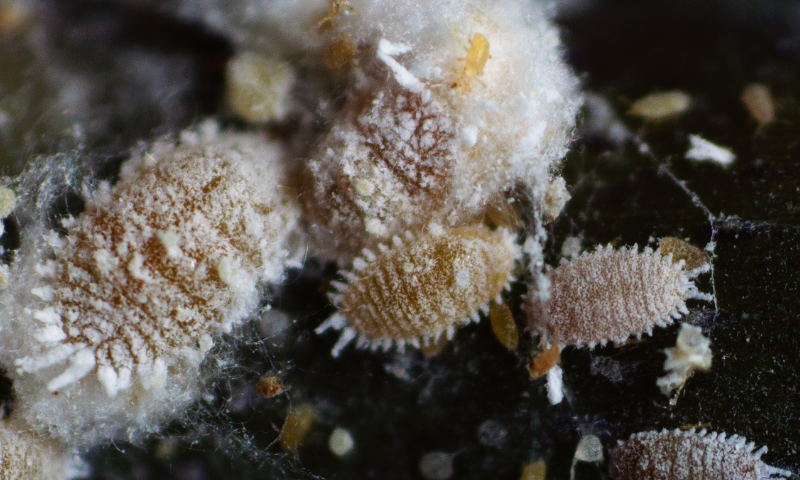
Females of the citrus mealybug
-
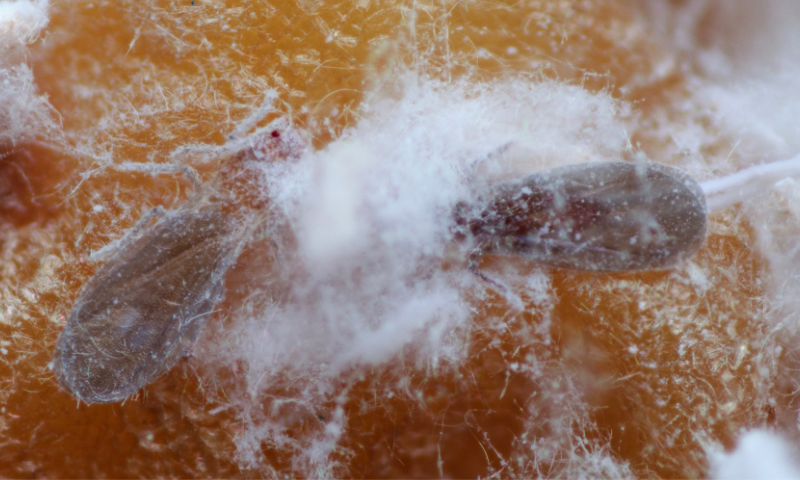
Males of the citrus mealybug

